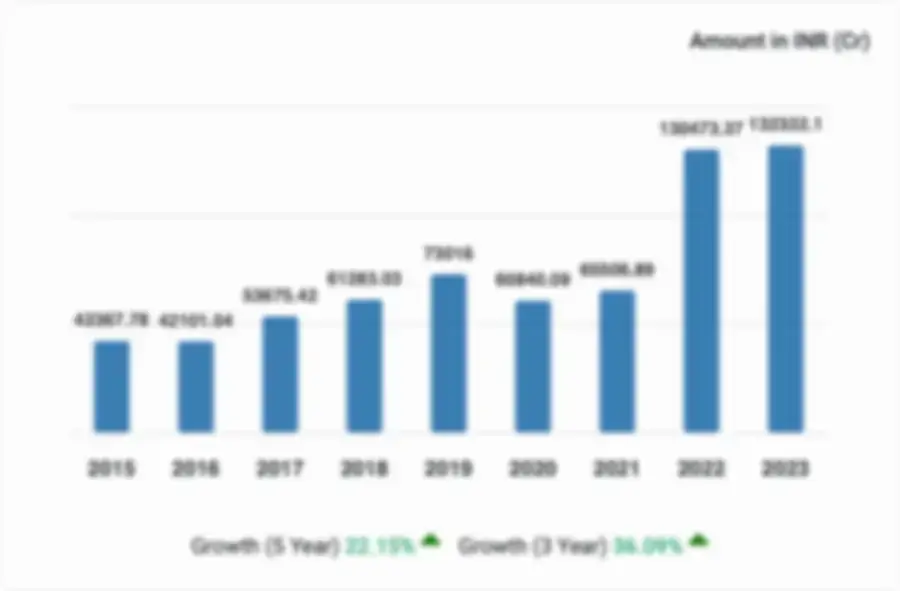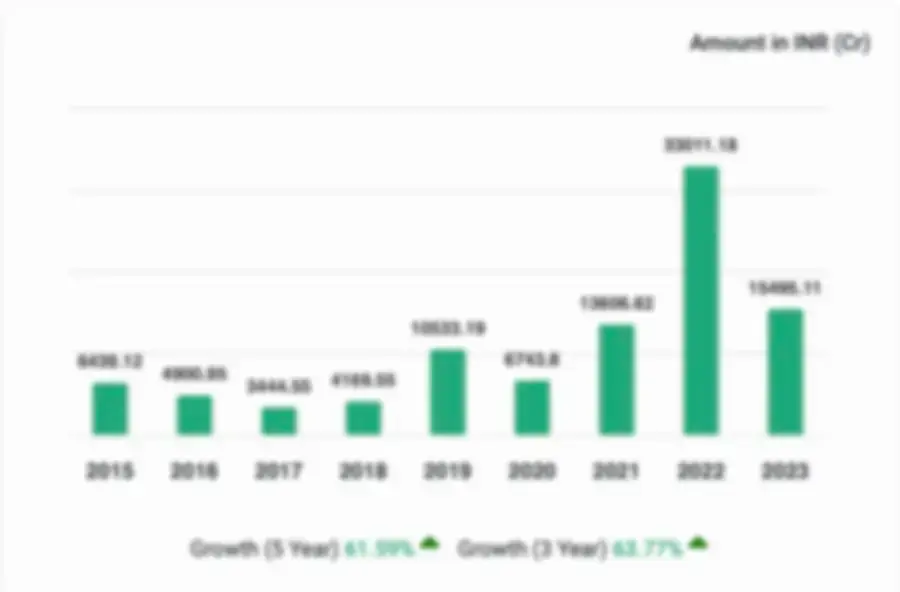

Temple City Technologies Profile
Key Indicators
- Authorised Capital ₹ 0.10 M
- Paid Up Capital ₹ 0.10 M
- Company Age 17 Year, 11 Months
- Last Filing with ROC 31 Mar 2024
- Revenue Growth 37.15%
- Profit Growth 206.82%
- Ebitda 117.38%
- Net Worth 35.06%
- Total Assets 18.57%
About Temple City Technologies
Temple City Technologies Private Limited (TCTPL) is a Private Limited Indian Non-Government Company incorporated in India on 12 June 2007 and has a history of 17 years and 11 months. Its registered office is in Madurai, Tamil Nadu, India.
The Company is engaged in the Information Technology Industry.
The Company's status is Active, and it has filed its Annual Returns and Financial Statements up until 31 March 2024. It's a company limited by shares with an authorized capital of Rs 0.10 M and a paid-up capital of Rs 0.10 M, as per Ministry of Corporate Affairs (MCA) records.
Saravanan Dhanabalan, Kamaraj Raj, and Dhanabalan Pandian serve as directors at the Company.
Company Details
- Location
Madurai, Tamil Nadu, India
- Telephone
+91-XXXXXXXXXX
- Email Address
- Website
- Social Media
Corporate Identity Details
- CIN/LLPIN
U72200TN2007PTC063924
- Company No.
063924
- Company Classification
Private Limited Indian Non-Government Company
- Incorporation Date
12 Jun 2007
- Date of AGM
30 Sep 2024
- Date of Balance Sheet
31 Mar 2024
- Listing Status
Unlisted
- ROC Code
Roc Chennai
Industry
What products or services does Temple City Technologies Private Limited offer?
Temple City Technologies Private Limited offers a wide range of products and services, including Turnkey Consultants & Solutions, Project Management.
Who are the key members and board of directors at Temple City Technologies?
Board Members (3)
| Name | Designation | Appointment Date | Status |
|---|---|---|---|
| Saravanan Dhanabalan | Director | 12-Jun-2007 | Current |
| Kamaraj Raj | Director | 27-Dec-2022 | Current |
| Dhanabalan Pandian | Director | 20-May-2015 | Current |
Financial Performance of Temple City Technologies.
Temple City Technologies Private Limited, for the financial year ended 2019, experienced significant growth in revenue, with a 37.15% increase. The company also saw a substantial improvement in profitability, with a 206.82% increase in profit. The company's net worth Soared by an impressive increase of 35.06%.


- Key Matrics
- Balance Sheet
- Profit and Loss
- Cash Flow
- Ratios
| Metrics |
| (FY 2022) | (FY 2021) | (FY 2020) | (FY 2019) | ||
|---|---|---|---|---|---|---|---|
| Total Revenue |
| ||||||
| Revenue from Operations |
| ||||||
| Total Assets |
| ||||||
| Profit or Loss |
| ||||||
| Net Worth |
| ||||||
| EBITDA |
|
What is the Ownership and Shareholding Structure of Temple City Technologies?
In 2019, Temple City Technologies had a promoter holding of 100.00%. Access key insights, ownership, including shareholding patterns, funding, foreign investors, KMP remuneration, group structure, and overseas investments.

Charges (Loans)

There are no open charges registered against the company as per our records.
How Many Employees Work at Temple City Technologies?
Temple City Technologies has a workforce of 14 employees as of Apr 07, 2024. Unlock access to detailed historical data on individuals associated with the company, including employment records, contributions to the Employees' Provident Fund Organization (EPFO), and other related insights.

Deals i

Gain comprehensive insights into the Deals and Valuation data of Temple City Technologies, offering detailed information on various transactions, including security allotment data. Explore the intricate details of financial agreements, mergers, acquisitions, divestitures, and strategic partnerships that have shaped Temple City Technologies's trajectory.
Rating

Access the credit rating data, providing valuable insights into the company's creditworthiness and financial stability. Explore assessments from leading credit rating agencies, evaluating factors such as debt obligations, liquidity, profitability, and overall financial health.
Alerts

Stay informed about regulatory alerts and litigation involving and associated companies. Receive timely updates on legal proceedings, regulatory changes, and compliance issues that may impact the company's operations, reputation, and financial performance. Monitor litigation involving subsidiaries, joint ventures, and other affiliated entities to assess potential risks and liabilities.
Latest Updates, News, and FAQs on Temple City Technologies
Recent activity within the organization
- Annual General Meeting
Temple City Technologies Private Limited last Annual general meeting of members was held on 30 Sep 2024 as per latest MCA records.
- Balance Sheet
Temple City Technologies Private Limited has filed its annual Financial statements for the year ended 31 Mar 2024 with Roc Chennai.
- Director Appointment
Kamaraj Nirenjjana Raj was appointed as a Director was appointed as a Director on 27 Dec 2022 & has been associated with this company since 2 years 4 months .
- Director Appointment
Dhanabalan Saravanan Raja Karthik Pandian was appointed as a Director was appointed as a Director on 20 May 2015 & has been associated with this company since 10 years 5 days .
- Director Appointment
Saravanan Sundaram Muthaiya Karuppananadar Dhanabalan was appointed as a Director was appointed as a Director on 12 Jun 2007 & has been associated with this company since 17 years 11 months .
- Company Incorporation
Temple City Technologies Private Limited was registered on 12 Jun 2007 with Roc Chennai & aged 17 years 11 months as per MCA records.
Frequently asked questions
What is the Incorporation or founding date of Temple City Technologies Private Limited?
Temple City Technologies Private Limited was incorporated on 12 Jun 2007.
What is authorized share capital and paid-up capital of Temple City Technologies Private Limited?
The authorized share capital of Temple City Technologies Private Limited is ₹ 0.10 M and paid-up capital is ₹ 0.10 M.
Who are the current board members & directors of Temple City Technologies Private Limited?
Currently 3 directors are associated with Temple City Technologies Private Limited.
- Saravanan Sundaram Muthaiya Karuppananadar Dhanabalan
- Kamaraj Nirenjjana Raj
- Dhanabalan Saravanan Raja Karthik Pandian
What is the registered address of Temple City Technologies Private Limited?
As per Ministry of Corporate Affairs (Mca), the registered address of Temple City Technologies Private Limited is 242/B Ii Floor, Kamarajar Salai India, Madurai, Tamil Nadu, 625009.
What is the corporate identification number (CIN) and company number of Temple City Technologies Private Limited?
The corporate identification number (CIN) of Temple City Technologies Private Limited is U72200TN2007PTC063924 and the company number is 063924 as per Ministry of Corporate Affairs (MCA).
What is the official website of Temple City Technologies Private Limited?
The Official website of Temple City Technologies Private Limited is https://www.templecitytech.com
What has been the recent revenue trend for Temple City Technologies Private Limited?
According to the financial reports for the fiscal year 2019, the revenue trend for Temple City Technologies Private Limited has risen by 37.15%.
How many employees does Temple City Technologies Private Limited currently have?
As Per 2019 financial reports, 14 employees are currently employed by Temple City Technologies Private Limited.
What change has been observed in the net worth of Temple City Technologies Private Limited, and by what percentage?
The financial reports for the fiscal year 2019 indicates that The net worth of Temple City Technologies Private Limited has experienced an upsurge of 35.06%.
When was the last Balance Sheet of Temple City Technologies Private Limited filed with the ROC?
The most recent Balance Sheet for Temple City Technologies Private Limited was filed with the ROC on 31 Mar 2024.
Search company & director profiles for free and gain access to critical business data.
- 3.1M+ Companies
- 15M+ Legal Cases
- 525K+ Credit Ratings
- 5.8M+ Directors & KMP
- 750K+ Regulatory Alerts
- 1.1M+ Companies' Financial Records
People also Viewed
SS
Saravanan SanthanakrishnanDirectorDN
Dhanabalan NadarDirector
Similar Companies Based on IT Consulting & Support Services
 Hcl Technologies Limited Delhi, India
Hcl Technologies Limited Delhi, India Cognizant Technology Solutions India Private Limited Kanchipuram, Tamil Nadu, India
Cognizant Technology Solutions India Private Limited Kanchipuram, Tamil Nadu, India Capgemini Technology Services India Limited Pune, Maharashtra, India
Capgemini Technology Services India Limited Pune, Maharashtra, India Microsoft Corporation (India) Pvt Ltd Delhi, India
Microsoft Corporation (India) Pvt Ltd Delhi, India Ltimindtree Limited Mumbai, Maharashtra, India
Ltimindtree Limited Mumbai, Maharashtra, India Infosys Limited Bangaluru, Karnataka, India
Infosys Limited Bangaluru, Karnataka, India Wipro Limited Bangaluru, Karnataka, India
Wipro Limited Bangaluru, Karnataka, India Amazon Development Centre (India) Private Limited Bangaluru, Karnataka, India
Amazon Development Centre (India) Private Limited Bangaluru, Karnataka, India
